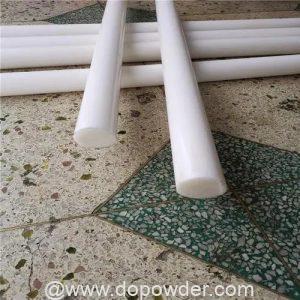What Is General Properties of Polyethylene Resin

General Properties of Polyethylene Resin
Polyethylene resin is a non-toxic, odorless white powder or granule, milky white in appearance, with a wax-like feel, and low water absorption, less than 0.01%. The polyethylene film is transparent and decreases with increasing crystallinity. The polyethylene film has low water permeability but high air permeability, which is not suitable for fresh-keeping packaging but suitable for moisture-proof packaging. It is flammable, with an oxygen index of 17.4, low smoke when burning, a small amount of molten droplets, yellow on the flame and blue on the bottom, and paraffin odor. Polyethylene has better water resistance. The surface of the product is non-polar, difficult to bond and print, and has been improved by surface treatment. More branched chains have poor resistance to photodegradation and oxidation.
Its molecular weight is in the range of 10,000 to 100,000. If the molecular weight exceeds 100,000, it is ultra-high molecular weight polyethylene. The higher the molecular weight, the better its physical and mechanical properties, and the closer to the required level of engineering materials. But the higher the molecular weight, the more difficult it is to process. Polyethylene has a melting point of 100-130°C and has excellent low temperature resistance. It can still maintain good mechanical properties at -60 °C, but the operating temperature is 80~110 °C.
It is insoluble in any known solvent at room temperature, and can be dissolved in a small amount in toluene, amyl acetate, trichloroethylene and other solvents above 70°C.
Electrical Properties of Polyethylene Resin
Because polyethylene is non-polar, it has excellent electrical properties with low dielectric loss and high dielectric strength. It can be used as frequency modulation insulating material, corona-resistant plastic, and high-voltage insulating material.
Thermal Properties
The heat resistance of polyethylene is not high, and it improves with the increase of relative molecular weight and crystallinity. Good low temperature resistance, the brittle temperature can generally reach below -50 ℃; and with the increase of relative molecular mass, the lowest can reach -140 ℃. The linear expansion coefficient of polyethylene is large, up to (20~24)×10-5/K. High thermal conductivity.
